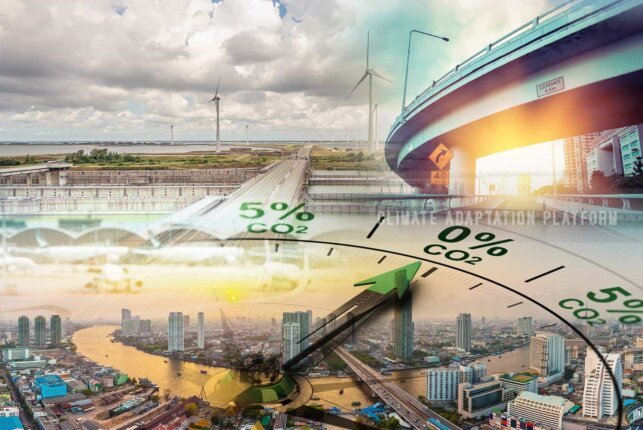Cities are on the frontlines of climate action, and the choices made today in urban development will shape climate outcomes for generations. The World Bank’s newly released report, Banking on Cities: Investing in Resilient and Low-Carbon Urbanization, underscores this reality with both urgency and hope.
With over 56 per cent of the global population residing in urban areas, a figure projected to rise to 66 per cent by 2050, cities have become the epicentre of human settlement, economic activity, and environmental stress. They account for nearly 70 per cent of global greenhouse gas emissions and are disproportionately exposed to climate risks such as floods, heatwaves, and water scarcity.
The report highlights that cities in low- and middle-income countries (L&MICs) have a unique opportunity: they can leapfrog outdated, high-emission growth models and instead invest in climate-smart infrastructure. Achieving resilient, low-carbon urbanization will require annual investments ranging from US$256 billion to US$821 billion through 2050, equivalent to 0.8 to 2.6 per cent of combined GDP in L&MICs. Cumulatively, this translates to capital needs of US$7.9 trillion to US$25.5 trillion, in addition to US$525–548 billion annually in operation and maintenance costs.
Seven priority sectors for urban climate investment are identified: flood protection, energy-efficient buildings (including rooftop solar), heat resilience, solid waste management, low-carbon urban transport, and climate-resilient water and wastewater systems. Notably, flood resilience alone may demand up to US$15.5 trillion by 2050.
Despite the urgency, urban climate finance remains grossly inadequate. In 2021–22, L&MICs secured only US$92 billion, just 7 to 12 per cent of what is required annually. Alarmingly, only US$1 billion reached low-income countries, despite their heightened vulnerability and greater financing needs, estimated at up to 8.4 per cent of GDP.
The report makes it clear: climate finance is not an optional expense. It is the cost of developing cities the right way. Investments in resilience bring long-term savings through reduced maintenance, longer asset lifespans, and avoided disaster recovery costs. For instance, compact development in Amman, Jordan, has cut infrastructure costs by 25 per cent compared to business-as-usual scenarios.
The report urges a rethinking of urban financing. Municipalities must be empowered to raise own-source revenues, leverage intergovernmental transfers, and explore tools like land value capture, green bonds, and public-private partnerships. Private capital, though abundant, is often inaccessible due to limited creditworthiness and project readiness at city level. Blended finance and credit guarantees can help attract private partners by de-risking investments.
Moreover, climate-smart investments offer multiple co-benefits: they reduce emissions, create jobs (especially in informal sectors and for women and youth), improve air and water quality, and enhance health outcomes.
The World Bank report calls for national governments to provide clear frameworks for green finance, building codes, and performance-based support to cities. It also stresses the need for cities to build climate-aligned investment pipelines, improve transparency, and adopt urban data systems to track risks and outcomes.
Ultimately, Banking on Cities is not just a technical document, it is a call for climate justice and smart development. The report reminds us that investing in cities is not charity; it is strategy. The decisions made today will define the quality of life for billions by mid-century. As the World Bank notes, the world is not just watching cities, it is banking on them.
Stay updated with the latest news, analyses, and daily happenings —
join
The Catchline’s official WhatsApp channel today!



